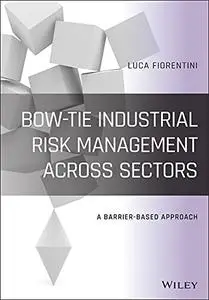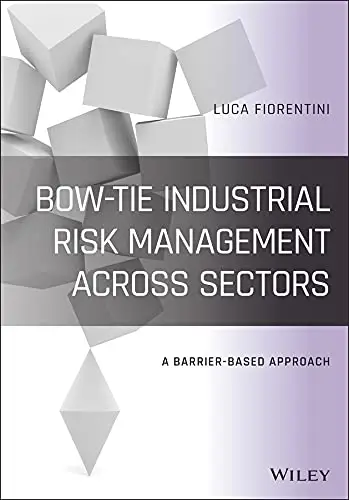Bow-Tie Industrial Risk Management Across Sectors
by Fiorentini, Luca;
English | 2022 | ISBN: 1119523834 | 481 pages | True PDF | 28.76 MB
by Fiorentini, Luca;
English | 2022 | ISBN: 1119523834 | 481 pages | True PDF | 28.76 MB
BOW-TIE INDUSTRIAL RISK MANAGEMENT ACROSS SECTORS
Explore an approachable but rigorous treatment of systematic barrier-based approaches to risk management and failure analysis
In Bow-Tie Industrial Risk Management Across Sectors: A Barrier-Based Approach, accomplished researcher and author Luca Fiorentini delivers a practical guide to risk management tools, with a particular emphasis on a systematic barrier-based approach called “bow-tie.” The book includes discussions of two barrier-based methods, Bow-Tie and Layers of Protection Analysis (LOPA), for risk assessment, and one barrier-based method for incident analysis, Barrier Failure Analysis (BFA). The author also describes a traditional method–Root Cause Analysis–and three quantitative methods–FMEA/FMECA, Fault Tree (FTA), and Event Tree (ETA) with a discussion about their link with barriers.
Written from the ground up to be in full compliance with recent ISO 31000 standards on enterprise risk management, and containing several case studies and examples from a variety of industries, Bow-Tie Industrial Risk Management Across Sectors also contains discussions of international standards dealing with common risks faced by organizations, including occupational health and safety, industrial safety, functional safety, environmental, quality, business continuity, asset integrity, and information security.
Readers will also benefit from the inclusion of:
A thorough introduction to the Bow-Tie method, including its practical application in risk management workflow from ISO 31000, the history of Bow-Tie, related methods, and the application of Bow-Tie in qualitative and quantitative ways
An exploration of Barrier Failure Analysis, including events, timelines, barriers, causation paths, and multi-level causes
A practical discussion of how to build a Barrier Failure Analysis, including fact finding, event chaining, identifying barriers, assessing barrier states, causation analysis, and recommendations
A concise treatment of Bow-Tie construction workflow, including a step-by-step guide
Perfect for engineers and other professionals working in risk management, Bow-Tie Industrial Risk Management Across Sectors: A Barrier-Based Approach will also earn a place in the libraries of advanced undergraduate and graduate students studying risk management and seeking a one-stop reference on the “bow-tie” approach and barrier-based methods.



